International Wheelchair Day is always March 1st and is an annual day of events and activities which take place around the World when wheelchair users celebrate the positive impact a wheelchair has on their lives. This video of a modified “Iron Man” suit inspired this book list.
Another interesting tidbit that I found is that Lego is introducing a new wheelchair mini-figure.
Here is another exoskeleton company: French company builds an ‘exoskeleton’ allowing wheelchair users to walk freely
And more exciting news:
A young paralyzed man just walked again after having an electrode implanted in his back.
25+ Wheelchair Books for Kids
Hello Goodbye Dog by Maria Gianferrari, illustrated by Patrice Barton
Zara’s dog Moose wants to join her at school, but he’s not allowed. He escapes time and time again, where he’s great at listening to stories being read aloud. Finally, Zara comes up with a solution so that Moose can join her as a therapy dog. This charming picture book has diverse themes wrapped around a heartwarming dog story. It will appeal to anyone who hates to leave their dog behind. [picture book, ages 4 and up]
My Must-Have Mom by Maudie Smith, illustrated by Jen Khatun
Jake’s mom is a dumpster diver, upcycling fixer extraordinaire! She can turn anything from old to new. Jake is worried that she might want to change him, but it turns out that she thinks he is perfect as he is! [picture book, ages 5 and up]
Dancing with Daddy by  Anitra Rowe Schulte, illustrated by Ziyue Chen
Anitra Rowe Schulte, illustrated by Ziyue Chen
I Will Dance by Nancy Bo Flood, illustrated by Julianna Swaney
Like many young girls, Eva longs to dance. But unlike many would-be dancers, Eva has cerebral palsy. She doesn’t know what dance looks like for someone who uses a wheelchair.
Then Eva learns of a place that has created a class for dancers of all abilities. Her first movements in the studio are tentative, but with the encouragement of her instructor and fellow students, Eva becomes more confident. Eva knows she’s found a place where she belongs. At last her dream of dancing has come true. [picture book, ages 4 and up]
Roll With It by Jamie Sumner
Review from Ms. Yingling Reads:
In the tradition of Wonder and Out of My Mind, this big-hearted middle-grade debut tells the story of an irrepressible girl with cerebral palsy whose life takes an unexpected turn when she moves to a new town.
“I really believe that most middle school students are more curious about differences than mean about them, and Coralee and Bert both evidence this in their treatment of Ellie. Ellie herself is very matter-of-fact about what she can and can’t do, and there is enough description about the help she needs to enlighten readers who have never encountered someone in a wheelchair. While the move necessitates some discussion of her wheelchair use, this is a book about the family dynamics and the grandfather’s Alzheimer’s as well as settling into a new community. It was fast-paced, fun to read, and included a lot of good baking descriptions.” [middle grade, ages 10 and up]
The Chance to Fly by Ali Stroker and Stacy Davidowitz
Review by Ms. Yingling Reads:
“Nat Beacon moves from California to New Jersey because her mother has a new job as an actuary (so boring!) and her father is the athletic director of the nearby high school. Nat’s not thrilled, because their home in California was more accessible to her wheelchair, everyone knew about the car accident that caused her to require it, and she was on a wheelchair racing team. When she and her father go to check out the local racing team, she sees a sign for an audition for Wicked. Nat is musical-obsessed, but her parents think that someone “with her circumstances” won’t be able to be on stage. Without her parent’s permission, she tries out and gets cast in the chorus. She’s thrilled to make friends, who are very helpful and friendly (especially the cute Malik!), and to finally get to perform. Her parents aren’t happy she disobeyed them, but let her work with the group. There are some hiccups– at first, the director tells her she doesn’t need to be on stage for all of the dances, her father drives her to the camp the group has and gets lost, and the theater the group was using suffers a bad fire. Nat and her friends look around to find another theater. Will the performance be able to go on, and will Nat finally get her chance on stage?” [middle grade, ages 8 and up]
Days with Dad by Nari Hong
Nari’s own dad used a wheelchair and this book reflects her message that it doesn’t matter if her dad can’t walk. She’s happy with the things that they do together: ice fishing, drawing, building a sandcastle, and going to the park. The message of half-full is told in a gentle way and resonates beyond having a differently-abled parent. [picture book, ages 4 and up]
 Arnie and the New Kid by Nancy Carlson
Arnie and the New Kid by Nancy Carlson
The new kid in school is different. His name is Phillip and he has a wheelchair. Arnie isn’t sure how to play with Phillip and he makes poor choices. He challenges Phillip to a race. He teases Phillip for eating slowly. When Arnie falls down the stairs and breaks his leg, twists his wrist, and sprains his tail, he needs help just like Phillip does sometimes. Now, Arnie is the one who eats the slowest and loses the race. It turns out that Arnie and Phillip have a lot in common. They both like baseball cards and video games. When Arnie gets his cast off, he gets invited to play baseball. Will he include Phillip? Yes, Phillip is Arnie’s coach!
Nancy Carlson’s story can help kids understand how to act around others with physical disabilities that they may not understand or empathize with. Sometimes this discomfort or lack of understanding can be expressed unkindly, like Arnie’s reaction. With a gentle touch, Carlson shows that kids — even those with physical disabilities — are just the same as everyone else … once you take the time to get to know them. [picture book, ages 4 and up]
King for a Day by
Malik has a special kite that he made himself for the Punjabi Basant Kite Festival, a kite-fighting competition. From his rooftop, Malik competes, taking down kite after kite including the kites flown by the bully next door. His victories crown him the king. When he sees the bully on the street below take a kite from a little girl, he intercedes with a gesture of kingly generosity. Malik’s physical disability is a subtle background note; his determination to win the kite fighting competition and the kindness he shows reveal how his wheelchair does not limit him. [picture book, ages 4 and up]
King of the Skies by Rukhsana Khan, illustrated by Laura Fernandez and Rick Jacobsen
Award-winning writer and storyteller Rukhsana Khan, tells a contemporary story set in Lahore, Pakistan about a boy known as the “King of the Skies” because of his kite-flying skills. Every year he anxiously awaits Basunt, the kite festival that celebrates the arrival of spring. Unable to walk or run, he relies on his brother and sister to get the kites he has cut free with the sharp twine of his yellow Guddi Chore, or “Kite Thief”, as he has named it. The movement of the kites flying up in the sky and the children running down below is a powerful contrast with the boy’s disability and a beautiful reminder that freedom comes in many colors and shapes. [picture book, ages 4 and up]
When Charley Met Emma by Amy Webb, illustrated by Merrilee Liddiard
When Charley saw Emma, he forgot what his mother taught him about being different. Different isn’t weird, sad, bad, or strange. Different is different and different is ok. It helped him apologize to Emma and to become friends with her. [picture book, ages 3 and up]
Yes I can!: A Girl and Her Wheelchair by Kendra J. Barrett, Jacqueline B. Toner, and Claire A. B. Freeland, illustrated by Violet Lemay
From Children’s Books Heal:
“The authors have written a very uplifting story that focuses more on what Carolyn can do, than what she can’t do. Carolyn is very outgoing, social, and wants to participate. And there are many things available to help children with disabilities adapt and participate.
I like how the teacher in the story handles Carolyn’s disability in her classroom. She makes sure Carolyn feels included when she asks her to pass out papers, when she invites her to help with the morning song, and when she makes sure she can accompany the class on a field trip. This helps Carolyn feel less isolated.
And the teacher has to deal with the other students’ curiosity. Kids are naturally very curious about someone they may perceive as different. Some feel cautious and awkward. They don’t know what to say or how to act. And Carolyn’s teacher is very supportive so that her school friends feel comfortable including her in school activities, recess, and lunch. The students hardly notice her disability.
The illustrations are expressive, warm, and endearing. They show diversity which complements the book’s theme.” [picture book, ages 4 and up]
The Snow Rabbit by Camile Garouche
Two sisters look longingly through their window at the snowy sky. One of the sisters goes out and sculpts a little rabbit. She brings it back inside to her sister who uses a wheelchair, but the ice sculpture begins to melt. They take it outside and into the forest where enchanted things begin to happen. [picture book, ages 4 and up]
Brave by Stacy McAnulty, illustrated by Joanne Lew-Vriethoff
With simple text, McAnulty expands the definition of bravery by showing kids facing different challenges, fears, and pressures. A young child racing in a wheelchair is included. An inspiring picture book all kids can relate to. [picture book, for ages 4 and up]
Seal Surfer by Michael Foreman
Ben and his grandfather find a seal mother and young pup along the rocky shore. Season after season, Ben watches the young seal grow up, from the pup’s first swim to learning to fish. Ben is learning new things too. He’s a strong swimmer and now he’s learning to swim. When a strong wave knocks him off his board and his head hits a rock, his young seal friend comes to his rescue, pushing him to the surface and onto his board.
From the illustrations, we see Ben progress from crutches at the beginning of the story to a wheelchair at the end but there’s no mention of why he needs either. Instead, this is a story about his bond with a seal pup and also, subtly, how he’s just like any other kid; strong and capable and willing to try new things. [picture book, ages 5 and up]
My girls have volunteered at Special Surfer Night where kids including those in wheelchairs learn to surf in Kennebunk, Maine. It’s an amazing experience for everyone involved.
Step by Step by Alice B. McGinty, illustrated by Diane Goode
Review by Storytime Secrets:
“Using the same style she employed to illustrate books such as the Cinderella Smith series and the Louise the Big Cheese picture books, Diane Goode lends a collection of cheerful figures to McGinty’s affirming words. Boys and girls of varying skin tones (and one girl using a wheelchair) welcome an uncertain newcomer into their circle, modeling how they try each day to make a step toward their goals, whether they’re working on counting, painting, building, or writing. The background of each page is stark white, focusing all the attention on the attitudes and movements of the characters.” [picture book, ages 4 and up]
The Berenstain Bears and the Wheelchair Commando by Stan and Jan Berenstain
I like the Berenstain Bears picture books but I wasn’t familiar with their chapter books and I was pleasantly surprised by this one. Harry is a new bear that moves into town. He’s in a wheelchair and he gets hostile when bears make assumptions about his condition and ask him how it happened. Brother and Sister Bear try to help him when Too-Tall bullies him, but Harry doesn’t want any help. It’s not until the kids get to know Harry that he can drop his defenses. When Too-Tall challenges him to a basketball game, Harry has a plan. He makes it a one-on-one game of wheelchair basketball and beats him badly. Now, even Too-Tall and his gang respect Harry and see him for who he is — just a kid in a wheelchair who is really good at computers, wheelchair basketball, and chess.
This is the kind of chapter book that helps kids realize how those with physical disabilities want to be treated, and it models how to look past the differences to find the commonalities. [early chapter book, ages 6 and up]
Noah Zarc series by D. Robert Pease
It’s a minor point that 12-year-old Noah Zarc is in a wheelchair because living on a spaceship doesn’t prevent him from piloting this time-traveling ship, dodging killer robots, or saving Earth’s animals from extinction. In this action-adventure series set in the future, Noah’s family is in trouble. His father is stranded in the Ice Age. His mother has been kidnapped and taken to Mars. And the foe that Noah must defeat who is bent on destroying Earth (again) is also somehow related to him. [middle grade, ages 8 and up]
Mascot by Antony John
Noah Savino has been stuck in a wheelchair for months. He hates the way people treat him like he’s helpless now. He’s sick of going to physical therapy, where he isn’t making any progress. He’s tired of not having control over his own body. And he misses playing baseball—but not as much as he misses his dad, who died in the car accident that paralyzed Noah.
Ms. Yingling Reads has a great review:
“Noah Savino lives in the St. Louis neighborhood of the Hill, which is great because he loves baseball. Well, he used to. After a devastating car accident, he is in a wheelchair and trying to figure out a new normal. This doesn’t include Logan, his former best friend, and teammate, who has been a jerk. When quirky new student Ruben moves to the area, calling himself “Double-Wide” because of his size, Noah is glad to have one person who doesn’t know all of the details of his accident. It helps that Ruben is also very matter-of-fact (and has some slight autism spectrum characteristics) and just ASKS Noah about issues that have to do with his wheelchair-bound state if he doesn’t understand them.” [chapter book, ages 8 and up]
Bouncing Back by Scott Ostler
Review from Ms. Yingling Reads:
“The treatment of grief and moving forward in this book is so well done. Yes, Carlos is dealing with horrible, overwhelming loss, but he also knows that he is lucky to have his aunt and uncle. There is talk of being in counseling, and the aunt and uncle are supportive but not enabling. Add to that the fact that Carlos’s trauma is not the whole story, and that’s what makes this especially good. The kids have to band together to save the gym from evil developers and the city government while playing basketball. Yes! It is possible to have serious issues in a book that is hopeful and interesting and not soggily sad.” [middle grade, ages 8 and up]
Be a King: Dr. Martin Luther King Jr.’s Dream and You by Carole Boston Weatherford, illustrated by James E. Ransome
Two of the most talented and prolific voices of color use their words and images to inspire a new generation to take Dr. King’s words to heart and utilize them by making mindful choices. In his words: “Everybody can be great because everybody can serve…You only need a heart full of grace, a soul generated by love.” There is a page spread that features a boy in a wheelchair: “You can be a King. Make the world take notice. Do your very best at whatever you do.” [picture book, ages 4 and up]
Digging Deep by Elena Delle Donne
This is one of my favorite middle-grade volleyball books. Elle is six feet tall in 6th grade so naturally everyone expects her to be a basketball star. And, it turns out, she is a great athlete. But the dynamic on her basketball team isn’t great. The coach is too intense and the previous center, Bianca, bullies her because she is the new center. Elle makes the difficult decision to quit the basketball team to join other extracurriculars including an anti-bullying club at school. When Lauren gets injured on the volleyball team, Elle gets recruited and finds that she likes the more laid-back vibe of this team. It’s a difficult balance to maintain friendships with old teammates while being on a new team. When Lauren recovers and can rejoin the volleyball team, Elle must decide which team makes her happier. Elle’s sister who uses a wheelchair and is autistic non-verbal adds an additional layer of diversity to the cast of characters. [middlegrade, ages 8 and up]
Into the Wind by William Loizeaux
Review by Ms. Yingling Reads:
“Rusty lives on an island off the New England coast with his father, who works in the local hardware store, his bossy older sister, and his mother, who is currently away at a residential treatment center for depression. This is hard for a ten-year-old, and if the summer weren’t bad enough, Rusty has to go to summer school for math and his best friend is away. He is excited about a small boat that a neighbor has given him to work on, and he is making a project of fixing it and learning to sail. While working on the boat one day, local artist Hazel asks if he will take her out in the boat. The problem? She’s elderly and in a wheelchair. Because it is a small town, before long she is asking his father if Rusty will do odd jobs for her, feeding him chicken salad and watermelon for lunch, and helping him with his math before he mows her lawn, dusts her living room, and learns about sailing from her. Hazel is also matter-of-fact about his mother and allows Rusty to talk a bit more about his feelings than he is encouraged to talk at home. Eventually, his mother comes home, summer winds down, and his connection with Hazel fizzles out. Luckily, their one day of sailing was a memorable one that both enjoyed. ” [middle grade, ages 8 and up]
The Best Worst Summer by Elizabeth Eulberg
Review by Ms. Yingling Reads:
“Peyton is having the WORST summer. Her family has moved from Minneapolis to the small town of Lake Springs, where her mother has gotten a university job. Her father is working from home but always busy, her brother is absorbed in video games, and she has plenty of time on her hands to miss her best friend, Lily. When she reluctantly does some gardening chores for her father, she finds a time capsule in the garden from 1989. In alternating chapters, we then get to see the story of Melissa and Jessica and the BEST summer that they had in 1989. The two friends, one whose professional parents adopted her from China, and one whose more working class parents are struggling, especially with their marriage, plan on eating lunches at the local cafe, hanging out at the bookstore, and generally having a good time. To memorialize their time, they are planning on a time capsule with pictures of their favorite pop stars, a mixtape, and other memorabilia. Peyton’s summer improves when she meets Lucas at the library. His friends are at camp, and his overprotective mother (he’s in a wheelchair) prefers he wander the town with someone. Peyton’s dad eventually relents as they get to know the town, so the two are able to follow Melissa and Jessica’s path, talk to people, and try to figure out who they were. As Melissa’s home life starts to deteriorate, it is harder and harder for her to get along with Jess. The two have to part suddenly, and the time capsule is Jessica’s way of trying to apologize, but of course, it is never received. Can Peyton and Lucas use their 21st-century skills and technology to get the two friends back together?” [middle grade, ages 8 and up]
Air by Monica Roe
Review by Ms. Yingling Reads:
“Emmie was born with spina bifida, which means that she is only able to walk a tiny bit, and has always relied on a wheelchair as her primary means of transportation. Her parents have always pushed her to do all manner of activities, and she’s especially fond of skateboarding ramps, which she used to jump with her father. Since her mother’s death in a car accident two years ago, her father has become more cautious and also doesn’t have as much time to spend with her since he is going to school. Things are tough economically in her small town in South Carolina, but the family has the help of her mother’s parents, who live nearby…
This was a fascinating book, and the author says in a note that she has worked with children in situations similar to Emmie’s. In twenty-five years of teaching, I’ve only ever had two students in wheelchairs, but there needs to be a more positive representation of all manner of different abilities” [middle grade, ages 10 and up]
From Effuah Sam @EffuahS on Twitter
My Name Is An Address releases July 13 by @ekuwah & features Ghanaian culture, her Black mother’s amazing art, & Ghanaian American grandfather aged 102 w vibrant, full picture imagery of wheelchair use by both.
Thanks for the acknowledgment of #MyNameIsAnAddress by
My Name is An Address by Ekuwah Mends Moses
You are not lost! You are not alone! A GPS system navigates you to where you are going, but your name could lead to what you are looking for. What’s in a name? Ekuwah Mends uses the alphabet letters to answer that question. She opens a window into her family, history, culture, language, geography, and more. [picture book, ages 8 and up]
From Leah Rose Kessler ✡︎ @leahrosekessler
Rat Fair by Leah Rose Kessler, illustrated by Cleonique Hilsaka
A nearly-wordless picture book about a group of rats who mix up a sign for an Art Fair, and instead create a jolly Rat Fair. A compassionate young boy steps up to save them from the humans who would sweep their festivities away. [picture book, ages 3 and up]
To examine any book more closely at Amazon, please click on image of book.
As an Amazon Associate, I earn from qualifying purchases.
p.s. Related posts:
Where Are the Wheelchairs in Children’s Books?
Physical Disabilities in KidLit
Physical and Developmental Challenge Books for Kids
Follow PragmaticMom’s board Multicultural Books for Kids on Pinterest.
Follow PragmaticMom’s board Children’s Book Activities on Pinterest.
BEST #OWNVOICES CHILDREN’S BOOKS: My Favorite Diversity Books for Kids Ages 1-12 is a book that I created to highlight books written by authors who share the same marginalized identity as the characters in their books.

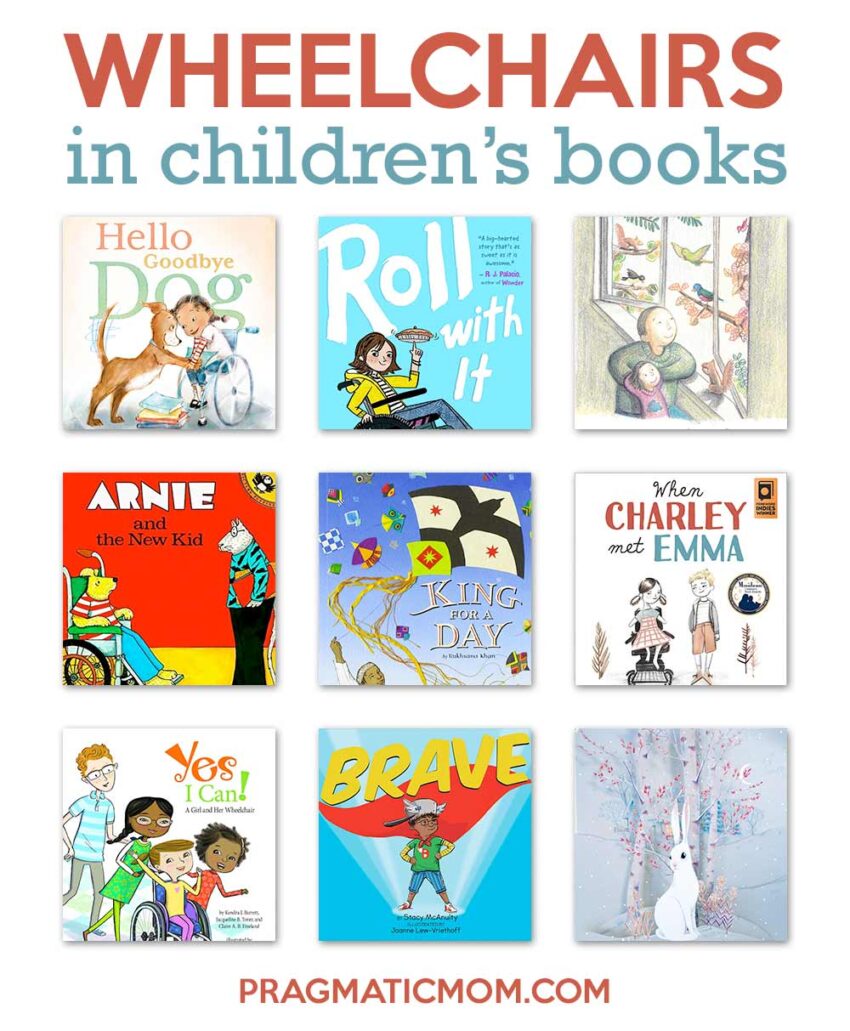
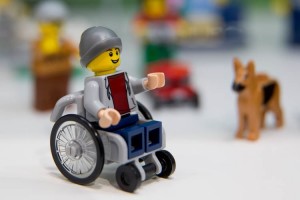
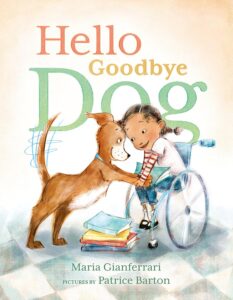
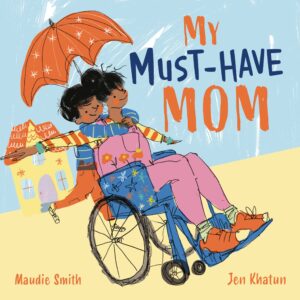
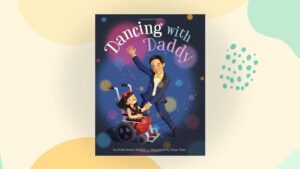
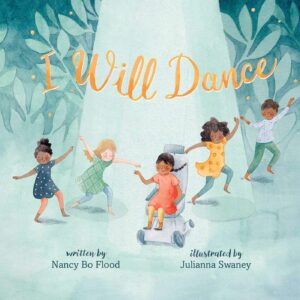
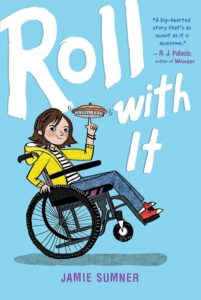
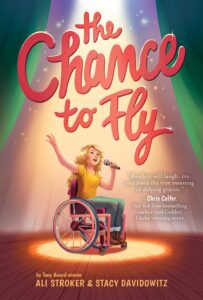
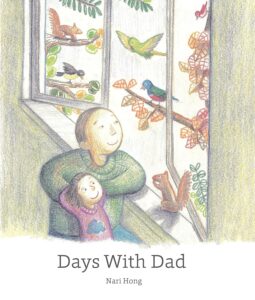
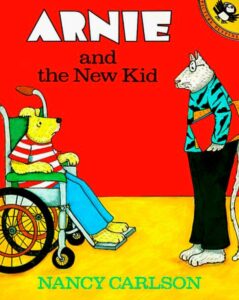
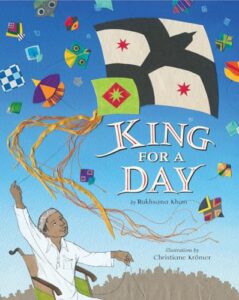
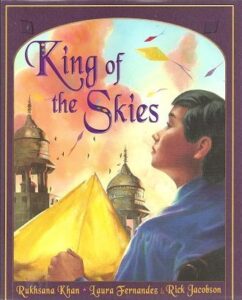
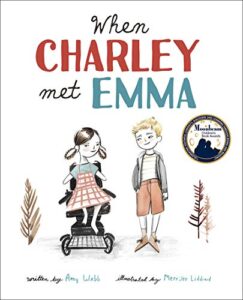
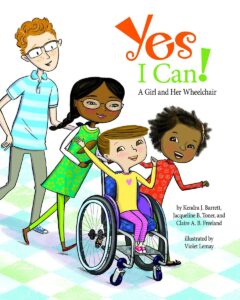

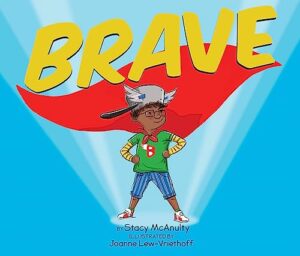
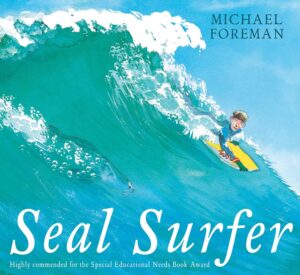
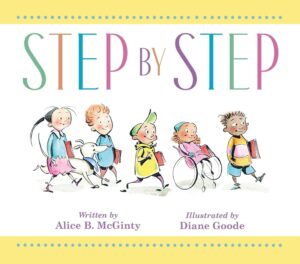
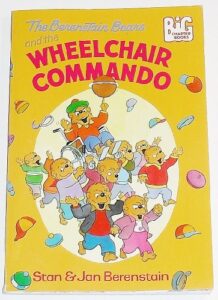
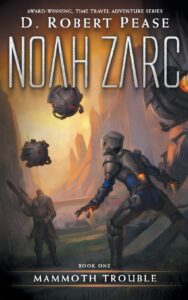
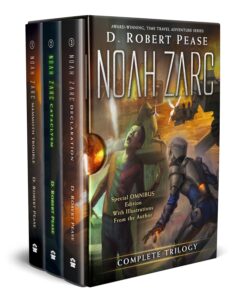
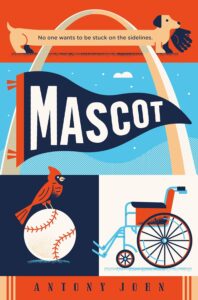
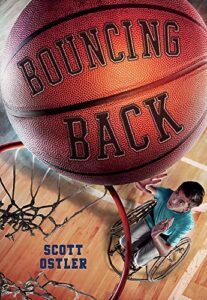
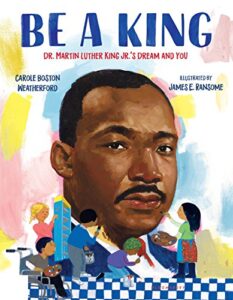
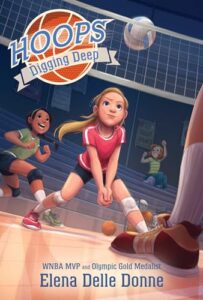
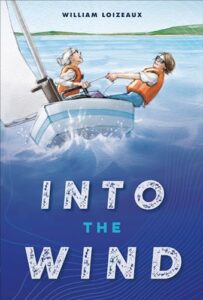
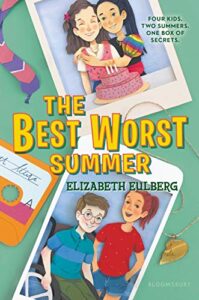
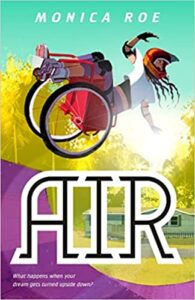
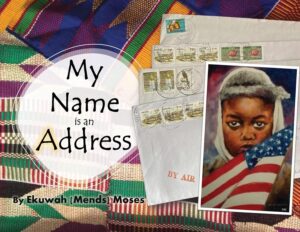

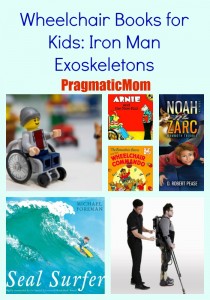
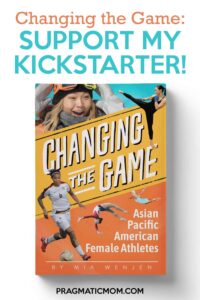

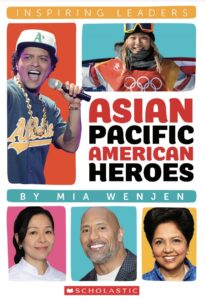
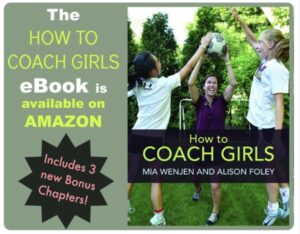

I had no idea it was international wheelchair day, Mia! Thanks for letting me know!
The main character of my pb, Hello Goodbye Dog, which is releasing next spring, will be illustrated by Patrice Barton and features a main character in a wheelchair 🙂
Hi Maria,
I’ll add your book to the list. There are very few books for kids with characters in wheelchairs!! Also, there are other wheelchair holidays besides this one. You might want that for your book launch.
Caught me by surprise. I didn’t realize there was a day. Too late for me. Great suggestions.
Hi Pat,
There’s another day for wheelchairs that I came across too. I have to look it up again though.
The exo-skeleton is really cool! I think that March 1st is a great day! 😀
Hi Erik,
I loved that exo-skeleton too! Very Iron Man! I’m sure when it comes out commercially, kids who don’t need it will want to try it out!
I *have* a child in a wheelchair, and I didn’t even know there was a day for it, LOL!
Hi Shecki,
I didn’t know either until I wrote the post. I’m glad there is a day for it!
I didn’t realise there was a special day either – but a great list, Mia – thank you. Perfect for my current theme about disability – will link to this!
Hi Marjorie,
And I would love to link back to your list too! Can you let me know when your post is live?
This is a really eclectic selection of books for children! It’s refreshing to see that there is such a variety out there; it’s so important for children to be exposed to people who have disabilities at an early age. These books certainly help in that mission! Great post! Thanks so much for posting!
Thanks so much Morgan!
Wonderful collection of books. I also join the group in admitting I had no idea that there is a National Wheelchair Day
Hi Gayle,
It was new to me too but I started looking up special days for my blogging schedule and I was glad to know that it existed. I think there is a special day, though, for just about everything! 🙂
Thanks for including “Yes I Can.” 😊
Can you stop using the phrase “wheelchair bound”? Try “wheelchair user” or “uses a wheelchair”. Because wheelchairs are a mobility device that keep you from being bound in one place.
Hi C Baker,
You are right! Sorry about that. I will fix it right now.